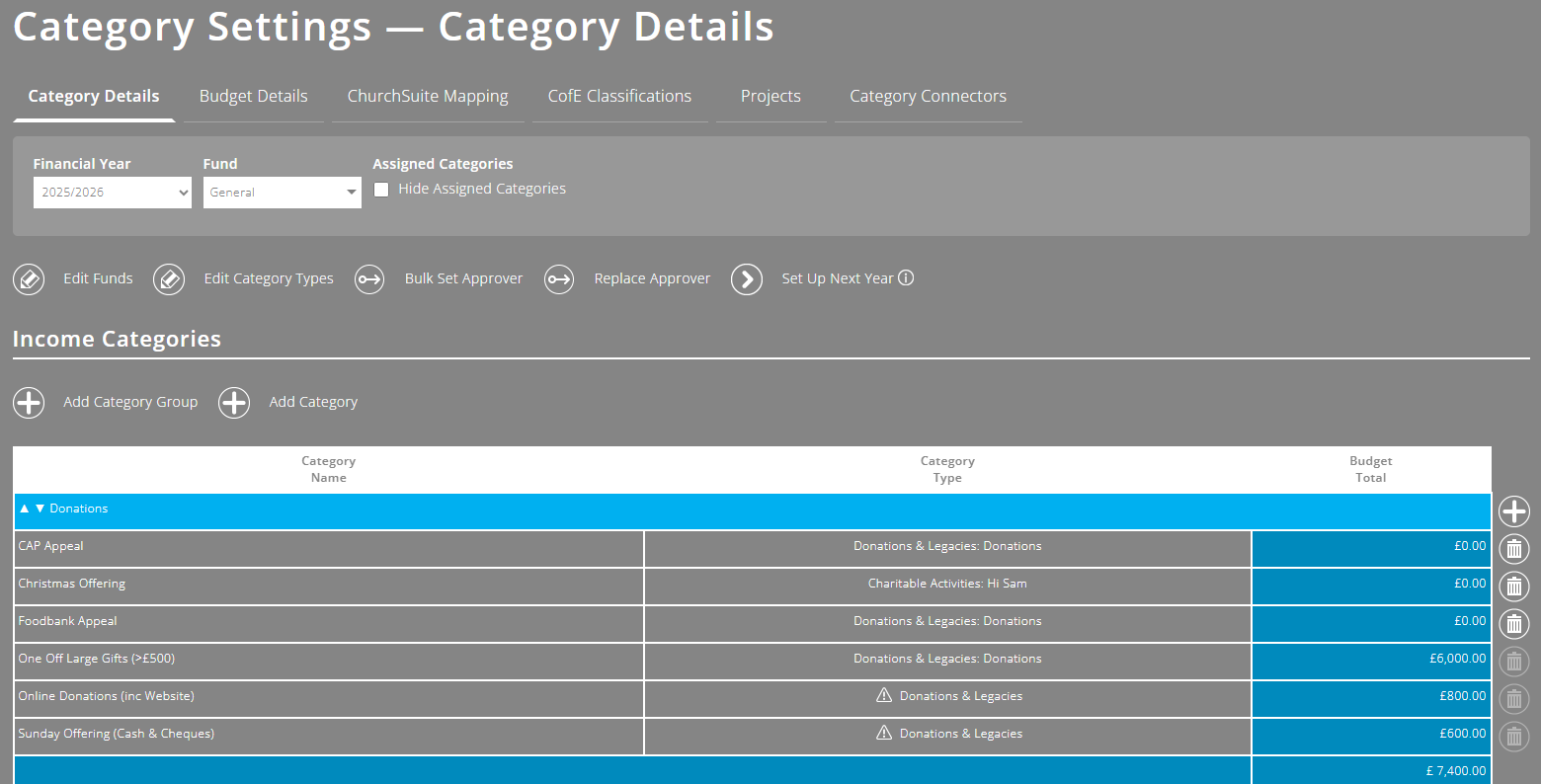How do projects work?
This article explains what projects are and how to set them up in ExpensePlus.
In this article:
There are many ways to account for projects and events within ExpensePlus. According to your preferences, you may choose to operate:
- A separate fund - good for larger projects or events e.g. a building project, or an ongoing special collection
- Categories grouped together using a project - good for events, and smaller one-off collections
- Transaction groups - typically only used by very large charities
What is a project in ExpensePlus?
The project feature in ExpensePlus enables you to track income, expenditure, and the running balance for an event or project. The benefit is that you don't need to create a separate fund for each event / project that you organise.
Typically, a project will have at least one income and one expenditure category. Sometimes, these categories will be within an organisation's General fund, in which case the income and expenditure will still be included within your total income and expenditure for that fund, but you will also be able to view a report for just the income and expenditure that relates to the project.
Many organisations prefer it if projects and events are not included within their General fund, particularly where these are self-funding. So instead, they create a 'Projects and Events' fund in which categories for each project reside. Similarly, a 'Restricted Gifts' fund is often created for restricted income (see example below).
If you link a category to a project, all transactions recorded against that category will be linked to that project - therefore you need to bear this in mind when setting up categories (see the example below where each project has its own 'donations' category, it's own 'gift aid' category, and it's own 'expenditure' category).

Note: the rules of fund accounting still apply, so if money is given for a special collection, for example, then the categories for this project MUST reside within a restricted fund within ExpensePlus.
Projects are managed in the Projects settings screen.
Setting up a project
Step 1
Firstly, give the project a name and a start date and specify which users will have access permission to the project report (at the bottom of this popup);

Step 2
Having completed this step, click the link in the yellow bar that will appear at the top of the screen, OR click on the project you just created, then click 'Manage Linked Categories'.

Step 3
You can now add the income and expenditure categories of your choosing to group together for project reporting (in this example, we are linking the 3 categories that relate to the Christmas Offering to this project).

Once the project is set up, users with the appropriate permissions can review project income, expenditure, and net balance figures from by going to Financial Reports -> Income & Expenditure Summary (By Project)

To view income and expenditure by category for this project, simply click anywhere on the table (as shown above), and the users who have sufficient permissions will be able to further drill into a category to view transactions in exactly the same way they do within the Income & Expenditure (by Fund) report.

Frequently Asked Questions
How do you enter income/expenditure against a project?
When you set up the project, you should have linked categories to that project (see section about setting up projects above). When you enter income and expenditure to one of the categories linked to a project, it will automatically get recorded to the project (by virtue of the fact that the categories are linked to the project) - therefore there are no additional fields to enter when recording an income or expenditure transaction.
How do I move funds from one project to another?
If you want to move money from one project to another (reallocate the funds), you can simply do this by reallocating the income or expenditure category that the funds are currently in to an alternative category that is associated with another project, or by completing a category transfer through the adjustments module.
How do I deactivate or delete a project?
You can deactivate and delete projects in the Projects settings screen. The 'X' button to the right-hand side of the table will deactivate a project, whereas the 'delete' button (dustbin icon) will remove it.
- Deleting the project will remove it from the system.
- Deactivating the project will mean it does not appear in your project reports by default. However, you can still choose to view it by selecting the 'deactivated' view on the project report.
To better understand the Finance Reports module, please view the module overview video here.
